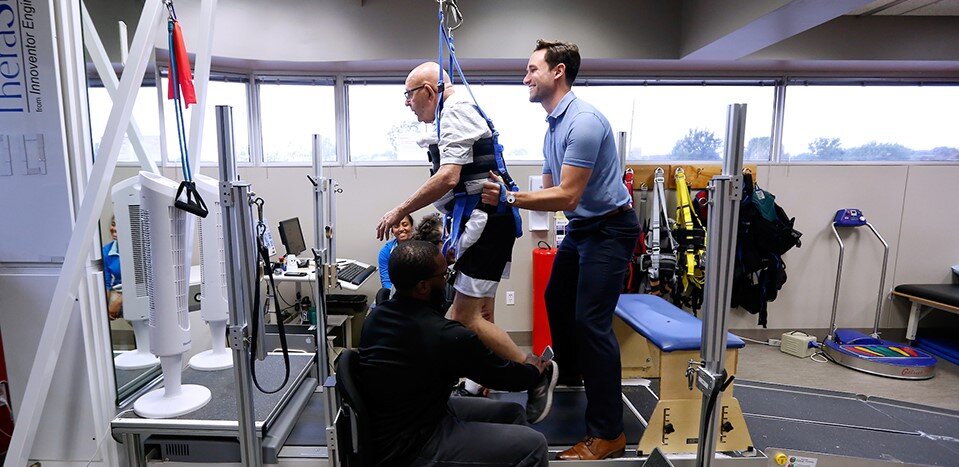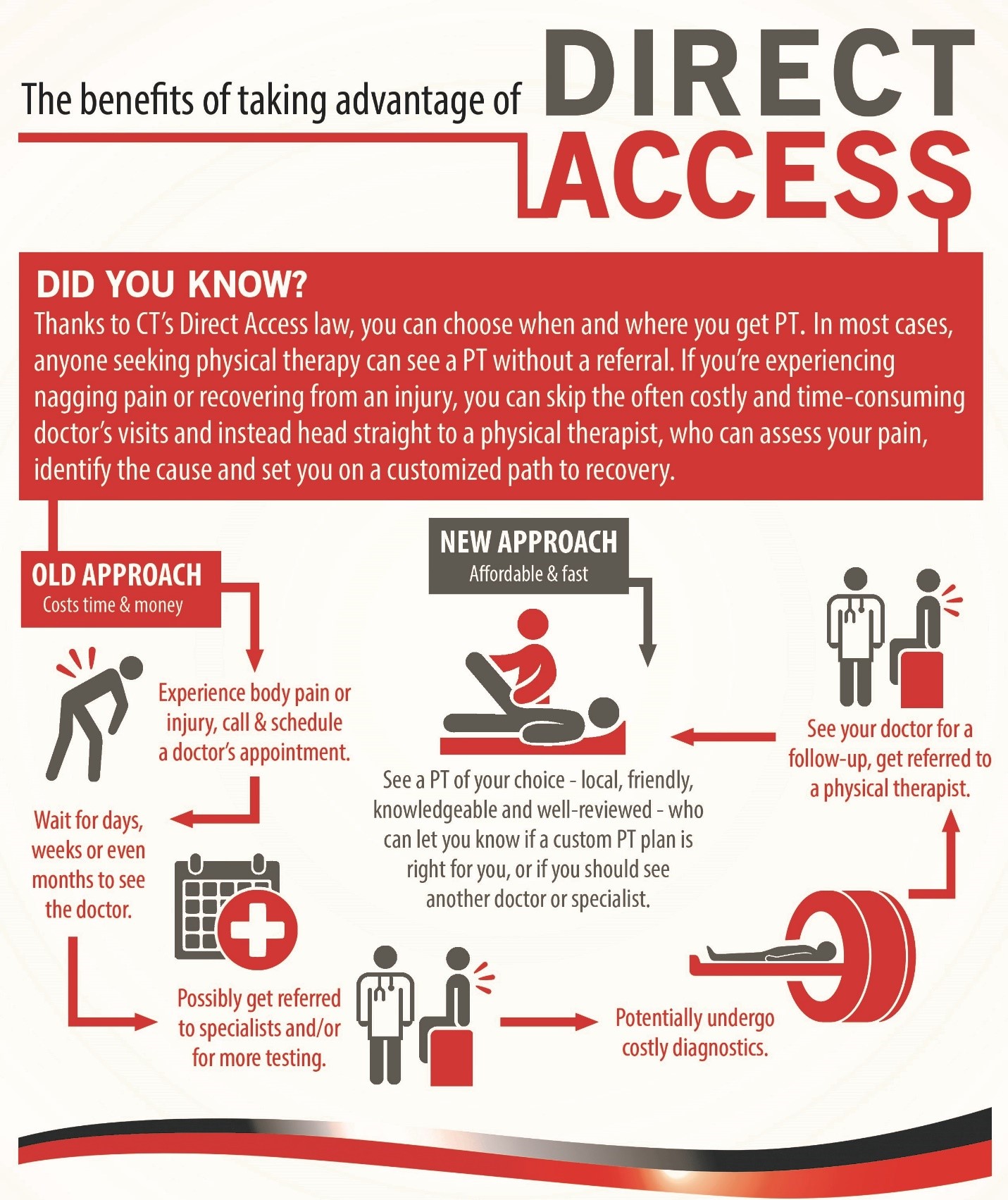Blogs by Topic:
Why Physical therapy or Occupational therapy:
Choose PT First to save time and money
Are you a smart consumer of Healthcare?
Conditions:
Pain relief without medication
What you need to know about arthritis
Your x-rays and MRIs show us the wrinkles on the inside
A new way to Treat Fibromyalgia
Share your goals; they’re important to us!
Back and Neck Pain:
Best way to get rid of back and neck pain
Essential Exercises for Back pain
Can PT help with Headaches/ Migraines?
Can PT help Back Pain? What we learned from Starbucks
Shoulder:
Prevent and Treat Shoulder Pain
Elbow:
Elbow Tendonitis, a.k.a Tennis Elbow
Wrist/ Hand:
Foot/Ankle:
Why Flip Flops may not be your best option
Pelvic Health:
What is Pelvic Health Physical Therapy
How to stay active during pregnancy
Surgery:
Tips & Tricks to Prepare for Surgery
Stronger going into Surgery, Stronger Coming out.
Common Interventions:
Should I be Stretching or Strengthening?
Seasonal:
A PTs Guide to Snow Shoveling Safety
Winter Safety in Industry: Navigating Cold Conditions with Confidence
Finding your balance in winter
Keeping your arms and hands safe in the Winter
Protecting your joints with summer activities
Information for all of our Green Thumbs
Athletics:
Preventing Pickleball Injuries
Could early specialization be the problem?
Concussion:
Everything you need to know about Concussions
Importance of Baseline Concussion Testing
Running:
Return to Running, Spring Edition
Injury Prevention, do shoes matter?
Orchestra and Performing Arts:
Industrial medicine:
Impact of Athletic Trainers in Industrial Care
Lifting Basics Part 1: Warm-ups, Cool-downs, Strengthening
Tactical Medicine:
Return to Work Assessment for an Injured Police Officer
Police Support Staff Person of the Year
Things we learned from participating in a mass-casualty simulation
Office:
Getting more activity during your workday
Decrease Fatigue and Reduce Stiffness
Direct Contracting:
Our role in providing exceptional care to the employees of local School Districts
Wellness:
Importance of physical activity
Why you need a PT on your team
The 4 P’s of Energy Conservation
Hidden Aches and Pains caused by Cell Phones
How to decrease the aches and pains brought on by using your phone
Movement Vital Sign, what is that?
You’re never too old to strength train
Improve your mood with exercise, especially during the holidays
Importance of Building Strength
Meet the Team:
Better going into surgery, better coming out.
Briana Wasielewski, PTA, CCCE, BS
Having the best rehab after surgery is one of the top priorities of all surgical candidates. Many spend a lot of time getting the best surgeon in place, getting their place to rest in order, and thinking about who can help them with daily life and getting to and from appointments once the surgery is done. While these are all things one should think about prior to surgery, many do not think about what they can do to ultimately increase their chances of having a better surgical outcome: exercise prior to surgery.
Exercise comes in many forms and is something everyone can do before surgery. If done appropriately, exercise before surgery will likely improve recovery. Who better to help figure out your unique pre-op exercise plan than a physical therapist?
First, a physical therapist will discuss and evaluate your reason for surgery. Many times the reason a patient is thinking about having surgery is that they have pain or their movement is affected. Exercise is usually not something surgical candidates think they can or should do before considering surgery. Prehab exercise is specifically designed by physical therapists to improve the outcome of patients’ post-surgical rehab. The idea here is “the better going into the surgery, the better coming out”. Whether that means breathing exercises, simple strengthening, flexibility work, or practicing how to use crutches, seeing a physical therapist before surgery can help the healing process in the long run.
A physical therapist prehab visit also gives the opportunity for surgical candidates to ask questions specifically about the most dreaded part of having surgery: the recovery. Physical therapists are experts in rehabilitation and can tell you exactly what to expect in recovery, and how to prepare yourself with pain management tools.
If you are thinking about having surgery or know someone who is, make sure you prepare yourself and your body by seeing one of our physical/occupational therapists.
Head to our location page to find a clinic near you!
Can Physical Therapy lessen or stop headaches/migraines?
Dennis Kaster, PT
Did you know that physical therapists are able to significantly decrease or eliminate headaches and or migraines? Many times headaches and migraines are triggered by muscle tension or tightness in your neck. These muscle issues can be alleviated with some simple corrections to poor posture and muscle weakness or tightness. There are many ways that a physical therapist can help you to get rid of your headaches and migraines. Physical therapy is a great alternative to taking expensive medications which can be detrimental to some of your body organs— like your liver. Treatments like Botox can be very expensive and have only temporary effects. The corrections that a physical therapist makes can be lifelong. Here are some ways a physical therapist can help to decrease your headaches or migraines.
Posture – If you have poor posture or are looking down a great deal, this can cause the muscles that hold your head up to pull extra hard on the back of your skull. This can trigger headaches and migraines. By improving your posture or modifying your work station, these same muscles will not pull as hard on the back of your skull.
Ergonomic setup – if your workstation or even areas that you do crafting in are not set up correctly, this can put extra stress on your body and neck. Simple things like wearing reading glasses instead of bifocals when you are at your computer can make a big difference. A physical therapist can help you to set up your work stations to put less stress on your body.
Dry needling – This is a newer technique that can give instant relief for headaches and migraines. I have seen some patients get total relief from migraines and headaches after just a couple of treatments using this technique combined with other treatments listed here. This technique involves putting very thin needles into the sore muscles causing headaches and migraines. It is very simple and takes only a few minutes to do. Call one of our clinics for more details on this awesome technique.
Stretching – Muscle tightness can definitely trigger migraines and headaches. A physical therapist can give you stretches specifically for the individual muscles that are causing your headaches or migraines.
Strengthening – Weak muscles in your neck and upper chest area can also contribute to your migraines and headaches. A physical therapist can give you specific strengthening exercises to better support your head and neck.
Soft tissue mobilization – Many times the muscles in your neck and upper back can be very sore and have “knots” or trigger points in them, or just be tight. A physical therapist can do soft tissue mobilization, a very specific type of massage, which will help to alleviate muscle tightness and trigger points in your muscles.
Ultrasound/Electrical stimulation – Ultrasound is a modality that helps to relax muscle tissue and promote healing. Electrical stimulation is a modality that can help to decrease pain and inflammation in the tissues. Either or both of these can be used to help decrease your pain or muscle tightness.
Unfortunately, one of the best-kept secrets is that physical therapy is a relatively cheap and easy way to decrease or eliminate headaches and migraines without taking expensive and powerful medications.
Please call one of our clinics today. We can do a free screen with you to let you know if we think we can help you. Most insurances do not require a physician referral to physical therapy, so you can call and set up an appointment without having to see a physician first. We look forward to helping you take control of your life and to eliminate the crippling effects of headaches and migraines.
October is National Physical Therapy Month!
Adam Wirtz, DPT, PT, OCS
In celebration of National Physical Therapy Month, I thought it would be beneficial to share some facts about our profession:
Physical therapists (PT’s) are movement experts who optimize quality of life through prescribed exercise, hands-on care, and patient education. PT’s and the licensed physical therapist assistants (PTA’s) they may team with provide care across the lifespan to anyone of any ability.
There are many benefits to physical therapy. Some of which include the following:
Ø It can maximize your movement. PT’s can identify, diagnose, and treat movement problems. Pain-free movement is essential for good quality of life, your ability to earn a living, and your ability to remain independent.
Ø Personalized care that meets your specific needs. PT’s design individualized treatment plans to address each patients’ needs, challenges, and goals. PT’s and PTA’s improve patient mobility, manage/decrease pain and other chronic conditions, recovery from injury/surgery, and aim to prevent future injury and chronic disease.
Ø Accessibility. PT’s and PTA’s provide care in a variety of settings including hospitals, private practices, outpatient clinics, homes, schools, sports and fitness facilities, work settings, and nursing homes.
Ø Active participation in care. PT’s and PTA’s empower and motivate people to be active participants in their care. They also work in collaboration with other medical professionals to make sure patients receive high quality, comprehensive care.
Ø Reduces use of opioids. In certain situations, when dosed appropriately, prescription opioid medications can be an appropriate part of medical care. However, current CDC guidelines are urging medical providers to consider safer alternatives to opioids, like physical therapy, for most long-term pain management. Opioids have several risks including depression, overdose, and addiction; plus withdrawal symptoms when stopping use.
Ø Avoid surgery. Before undergoing expensive or invasive surgery, consider physical therapy first. There is mounting evidence that physical therapy can be as effective, or in some cases, even better than surgery for conditions such as meniscal tears and knee osteoarthritis, rotator cuff tears, spinal stenosis, and degenerative disk disease.
Now that you are aware of some of the benefits of PT, let’s address the topic of direct access.
Did you know that you have the freedom to choose your own physical therapist?
Ø Currently, you may be evaluated by a PT without a physician’s referral in all 50 states and the District of Columbia. In addition, all 50 states and the District of Columbia allow some level of treatment by a PT without a physician’s referral. This is referred to as “direct access” to physical therapy services.
Ø Some insurance policies may require you to see a primary care provider or physician prior to seeing a physical therapist. Also, some insurers may limit your access to preferred providers only. Contact your insurance company to make sure you are aware of any of these policies.
Ø If you have Medicare as your primary insurance, you are able to see a PT for an evaluation without a physician’s referral. The PT would then send the plan of care to the patient’s physician for signature. Once this is signed, treatment can be continued.
Ø Your physician may refer you for physical therapy that is provided in the physician’s office, or to a facility in which the physician has a financial interest. However, you are not obligated to attend PT in any specific facility or location. You can choose where you would prefer to attend physical therapy and which licensed physical therapist you would like to see- if you have a preference.
Now that you know all about the benefits of PT and your ability to choose your physical therapist, the next time you have an aching knee, a bum shoulder, or an injured lower back, consider finding a physical therapist to help you get back to moving well!
You can find a physical therapist in your area at www.moveforwardpt.com
No Referral Need for PT
By Andy Taber, PT, DPT
It still surprises me how many patients are not aware of the choices they have when seeking medical care, and in particular, physical therapy! As an advocate for my profession, I always try to be proactive in educating and informing patients of their rights when seeking medical treatment.
Under current Wisconsin law, Direct Access allows physical therapists to evaluate and treat patients without a referral from a doctor.
Historically, one of the main barriers between injured patients and proper PT services was the necessity of a doctor’s referral prior to any appointments. This extra step often prevents patients from seeking treatment from a qualified physical therapist. Indeed, each year, over 100 million Americans suffer from wellness and mobility impairments, and yet only 10% actually make their way to a physical therapy clinic. With the implementation of Direct Access, however, the process is streamlining. By placing the power directly into the hands of consumers and clinicians, direct access provides a new avenue through which a patient can receive evaluation and treatment for a host of injuries or conditions.
Put simply, Direct Access grants the patient the ability to “refer themselves” to their desired physical therapist, who may then provide evaluation and treatment without the sign-off of a physician. This may seem like a small deviation from the standard medical referral model, but in actuality, it could potentially have a profound effect on eliminating much of the bureaucratic red tape that the previous referral system was built upon. Some key benefits of this reform are as follows:
1. Direct Access eliminates the burden of extraneous visits to physicians. The referral requirement can cause delays and denials of services provided by physical therapists. These delays in care result in higher costs, decreased functional outcomes, and frustration to patients!
2. It promotes more efficient treatment by eliminating sometimes unnecessary and frequently expensive diagnostic testing, like MRI’s and X-Ray’s.
3. Direct Access can lead to both a better treatment experience and outcome for the client. Patients who visited a physical therapist directly for outpatient care had fewer visits (27%) and lower overall costs on average than those who were referred by a physician while maintaining continuity of care within the overall medical system and showing no difference in health care use in the 60 days after the physical therapy episode.
Direct Access also allows for patients to be treated sooner rather than later. Sometimes, injuries are not addressed until weeks, or even months, after originating. This may be due to patients having a difficult time getting in to see a specialist or reluctance in seeking treatment due to uncertainty on which doctor to see. Have you ever tried to “ride out” pain because you didn’t want to spend the time or money on doctor’s visits, specialists, procedures and medications? There is a better way to manage and treat your pain! In Wisconsin, the Direct Access law allows most people with most insurances to see a physical therapist without a prescription or referral from a doctor.
Physical Therapists are experts on the musculoskeletal system, including:
• Pain from muscle injuries
• Joint pain like arthritis
• Nagging back or neck pain
• Sports injuries
• Recovery from broken bones or fractures
• Post-operative rehabilitation
• Vertigo and other balance issues
• A host of other pain resulting muscle, bone and joint problems.
Physical therapists are also trained to ask the right questions, explore all possible causes, offer a clinical diagnosis and let you know if a customized PT plan is right for you - or if you should seek additional insight from a doctor or specialist. Now, most patients can see a physical therapist the same day of an injury, if desired! Treating injuries sooner will not only help speed up the healing process, but it may also decrease the financial burden of medical diagnoses that linger for longer periods of time. Research has shown that early physical therapy treatment decreases overall medical expenses in the long run, for a particular diagnosis!
If you are currently suffering from a recent injury or a nagging issue that’s been around for several weeks or months, feel free to stop by and speak with one of our therapists at Advanced Physical Therapy and Sports Medicine to determine how we can help you on your road to recovery!
Click here for a complete list of locations and therapists.






















